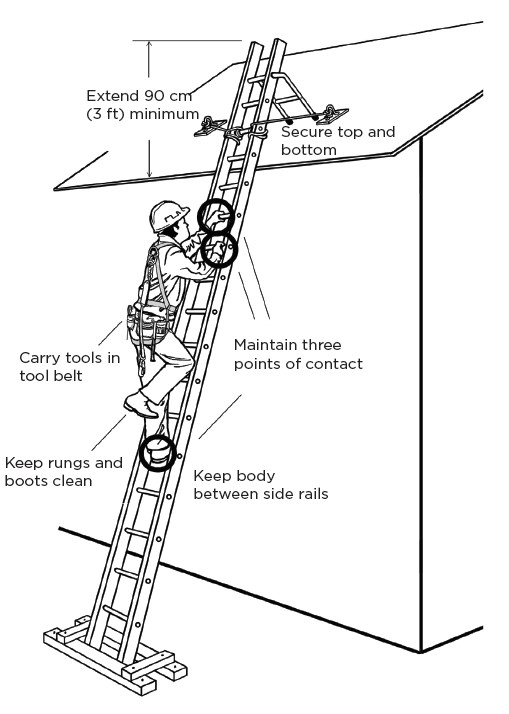Working at Heights – 3 Point Contact – Ladders
Working at Heights – 3-Point Contact Ladders
Explain dangers
Climbing a ladder is not as easy as it sounds. Workers have died from falls after losing their balance. Most ladder injuries occur when getting on or off a ladder.
Identify controls
• To use ladders safely, always maintain three points of contact. That means two hands and one foot or two feet and one hand on the ladder at all times.
• Moving quickly often results in only 2-point contact. You often have to make a conscious effort to maintain 3-point contact.
• Break 3-point contact only when you reach the ground or a stable platform.
• Tie off or secure the top and bottom of the ladder to prevent movement.
• Put both hands firmly on the rungs before stepping onto a ladder.
• Always face the ladder when you’re climbing up and down.
• Keep your centre of gravity between the side rails. Don’t lean out on either side.
• Keep both feet on the ladder when standing on it. Never straddle the space between a ladder and another object
• Make sure that the ladder extends at least 90 cm (3 ft) above the top landing.
• Make sure the ladder meets the requirements of a Grade 1, Grade 1A, or Grade 1AA ladder according to CSA Z11-12: Portable Ladders.
• Don’t carry tools, equipment, or material in your hands while climbing. Use a tool belt for small tools and a hoist line or gin wheel for lifting and lowering larger items.
• Clean mud, snow, and other slippery substances off your boots before climbing and make sure that rungs are clear.
• Always hold onto the ladder with at least one hand. If this is not possible and the work is 3 m (10 ft) or more above the floor, wear a safety harness and tie the lanyard off to the structure or to a lifeline.
Demonstrate
Use a ladder to demonstrate the controls to your crew as you talk.

For more information, visit the website.

